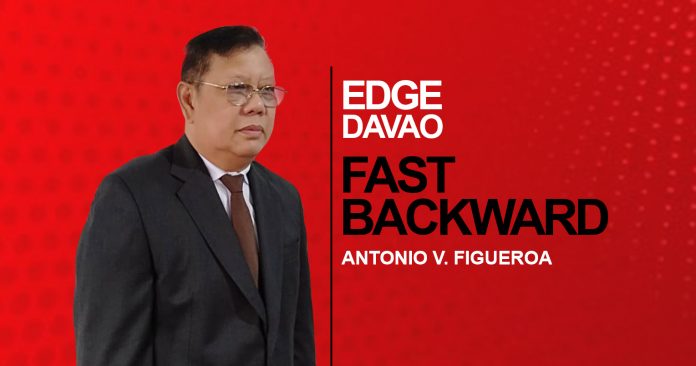President Ramon Magsaysay’s schedule on September 20, 1954, was even more hectic.
After taking breakfast with visiting Manila dignitaries and Davao provincial and city officials at the residence of Rep. Ismael Veloso at Juna Subdivision, Davao City, he proceeded to Madapo Hills, in Davao City, to lay the foundation stone of the Davao Metropolitan Waterworks, forerunner of the Davao City Waterworks District (DCWD).
Not mincing words during the cornerstone laying, Magsaysay again attacked his predecessor, President Elpidio R. Quirino, a member of the Liberal Party, for giving Davao only P4 million public works during his entire administration.
From there, he spoke at the Davao Maternity Hospital and also delivered an impromptu message at Tagum Development Company (TADECO) where he revealed the setting up of an abaca decorticating plant to improve the hemp industry. He then proceeded to Tagum to inaugurate the Bincungan steel bridge, now known as Miranda Bridge I, after briefly talking to well-wishers and welcomers who lined the streets of Panabo.
The announcement to establish a decorticating plant in the penal farm was made after the Davao Penal Colony (DAPECOL) signed an agreement with TADECO for it to handle the decortication of excess abaca produced by the colony’s hemp farm. The accord was extended several times despite dubious claims and unfounded complaints that the deal (which led to the leasing of penal lands as banana plantations) was detrimental to the government.
A luncheon conference with the Davao Producers Association at the TADECO plantation was tendered for the President. That evening, he conferred with prisons director Alfredo M. Bunye at DAPECOL, but later delivered a short message that likely stunned the attendees.
He announced the removal of undersecretary of agriculture and natural resources Jaime Ferrer as acting manager of the National Resettlement and Rehabilitation Administration, blaming him for the continuing operation of the NARRA project in Davao for no reason.
Due to inclement weather, the President and his party were forced to extend their stay for another night at TADECO and set their departure for the following day at 9:00 o’clock in the morning. Col. Benito Ebuen, Philippine Air Force chief, had advised the President against flying that night for Manila on account of the bad weather over the city.
To pass the night, the entourage slept in the TADECO plantation house owned by Antonio O. Floirendo, near the Davao Penal Colony land. Interestingly, the residence still survives to this day and has undergone improvements. It was used as a convergence for visitors during notable events, including the June 13 feast of San Antonio de Padua, the plantation’s patron.
Breakfast for the presidential entourage on the third day was served at the TADECO plantation house before the President and his train motored to DAPECOL to inspect the plants in the area, expressing fascination at seeing the animals in the colony’s zoo.
Thereafter, he conferred with the officials of the Bureau of Prisons led by the director after doing a round of the penal colony. He was also briefed on the developments and needs inside the penal farm. Before traveling to Davao for the flight home, he had a busy time receiving callers.
In that visit, Magsaysay addressed three important issues that affected Davao province, namely (i) the proliferation of squatters, (ii) the setting up of ramie textile plant to confront the huge burden the country was experiencing as a result of heavy importation; and (iii) the ironing of kinks related to the distribution of former Japanese lands to veterans.
All in all, the President, along with his entourage who were flown by three Air Force planes, spent two nights and three days in Davao province.




